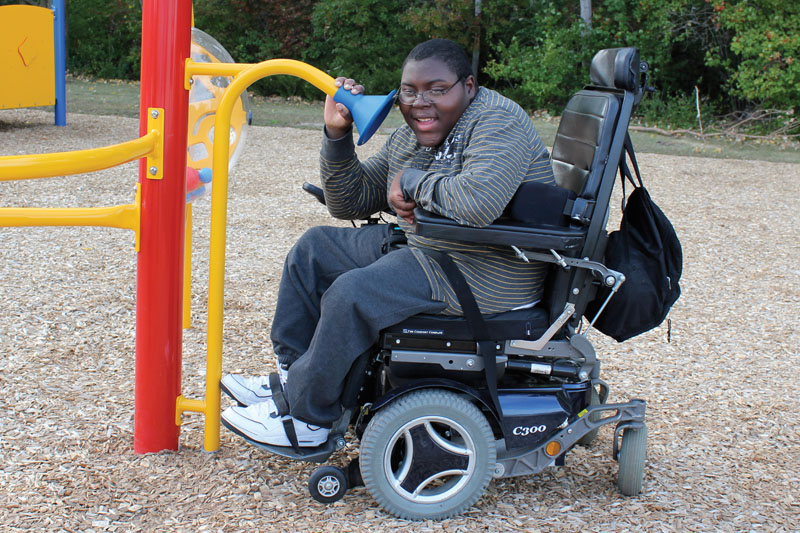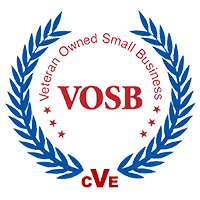What It Means to Have an Accessible & Inclusive Playground

You may have heard the terms “accessible” and “inclusive” when you started your research to plan your playground, and you may think that these are the same concepts. While they are closely related, they have different meanings, like two sides of the same coin. So, what are the differences, and why are both equally important?
Creating an Accessible Playground
Accessibility in your playground design means choosing equipment and designing spaces that can be used by special needs individuals. Since 1990, public spaces and playgrounds are required to be accessible to all individuals and conform to ADA requirements so that people with disabilities can fully enjoy them. Being ADA compliant is more than just advantageous for your community; it’s required by law.
For playgrounds, this design will include:
- Ramps: Handicap accessible ramps have their own set of requirements, such as a recommended slope of 1:12, a width of at least 36”, and handrails on any ramp with a rise of greater than 6”.
- Specialized play equipment: This equipment will include transfer platforms and handrails, as well as a dedicated space (or platform) for transfers from wheelchairs to the play equipment.
- Surfacing that can be used by wheelchairs, walkers, and other assistive devices: Playgrounds must meet the ASTM 1951-99 Standard Specification for Determination of Accessibility of Surface Systems Under and Around Playground Equipment.
- ADA compliant facilities: Restrooms must meet ADA requirements, and drinking fountains must be accessible for those with physical limitations.
- Shaded areas and picnic tables that accommodate those with physical challenges: Special ADA compliant benches and rest area seating should be available, with shaded areas covering some of the equipment and the rest areas.
- Wide, even walkways and sidewalks: For larger playgrounds of more than 1000 square feet, paths must be 60 inches wide, with ample area for turning a wheelchair.
Now that you understand that accessible playgrounds refer to the physical elements, such as equipment and surfacing, let’s take a look at the elements of an inclusive playground.
What is an Inclusive Playground?
Inclusive playgrounds focus on the design of the area, and the placement of the equipment in it. The idea of an inclusive playground means that all kids can play, regardless of physical or emotional challenges. It incorporates the needs of all kids, equally.
Some elements of an inclusive playground can include:
- Stimulation: Sensory stimulating equipment and environments will challenge every child, but some children can feel overstimulated. Inclusive play spaces will offer quieter areas where kids can regain their balance if they are feeling overwhelmed.
- Large social areas: Large social areas will let kids freely play with other kids, regardless of physical limitations. These areas must be level and soft for the safety of all children.
- Inclusive equipment integration: Inclusive equipment integration means having ADA accessible equipment side by side with your regular equipment. This allows kids to feel included and part of the bigger play community, regardless of limitations. It encourages interactive play for all.
- Safety for all: All equipment and play spaces should be uniformly maintained with the safety of all users in mind. Parents and caregivers should be able to view their children at play from rest areas and benches. Safety fencing can be used to ensure no children wander away from the play areas.
- Inclusive playgrounds encourage fair play: At the heart of an inclusive playground is fair play. Your playground spaces should provide equal opportunities for play that will encourage all children to have fun, communicate, and develop the important social interactions they need to succeed.
Sticking with the Seven Principles of Universal Design will ensure you are providing an inclusive playground environment for all kids. Your equipment and design should encourage:
- Fair use
- Flexibility of use
- Simplicity of use
- Easy understanding of how to use equipment
- Minimal accident and hazard risks
- Low energy output during usage
- Appropriate sizes and spaces to accommodate all
Planning the Perfect Playground
Metro Recreation is a leader in accessible, inclusive play areas. We proudly partner with Miracle Recreation for the equipment all kids can enjoy, encouraging hours of interactive fun for all. Contact Metro Recreation to help you design playground spaces that matter for all the kids in your community. Our selection of equipment, installation services, and playground inspection services take the work out of planning your playgrounds, so all you have left is fun.




